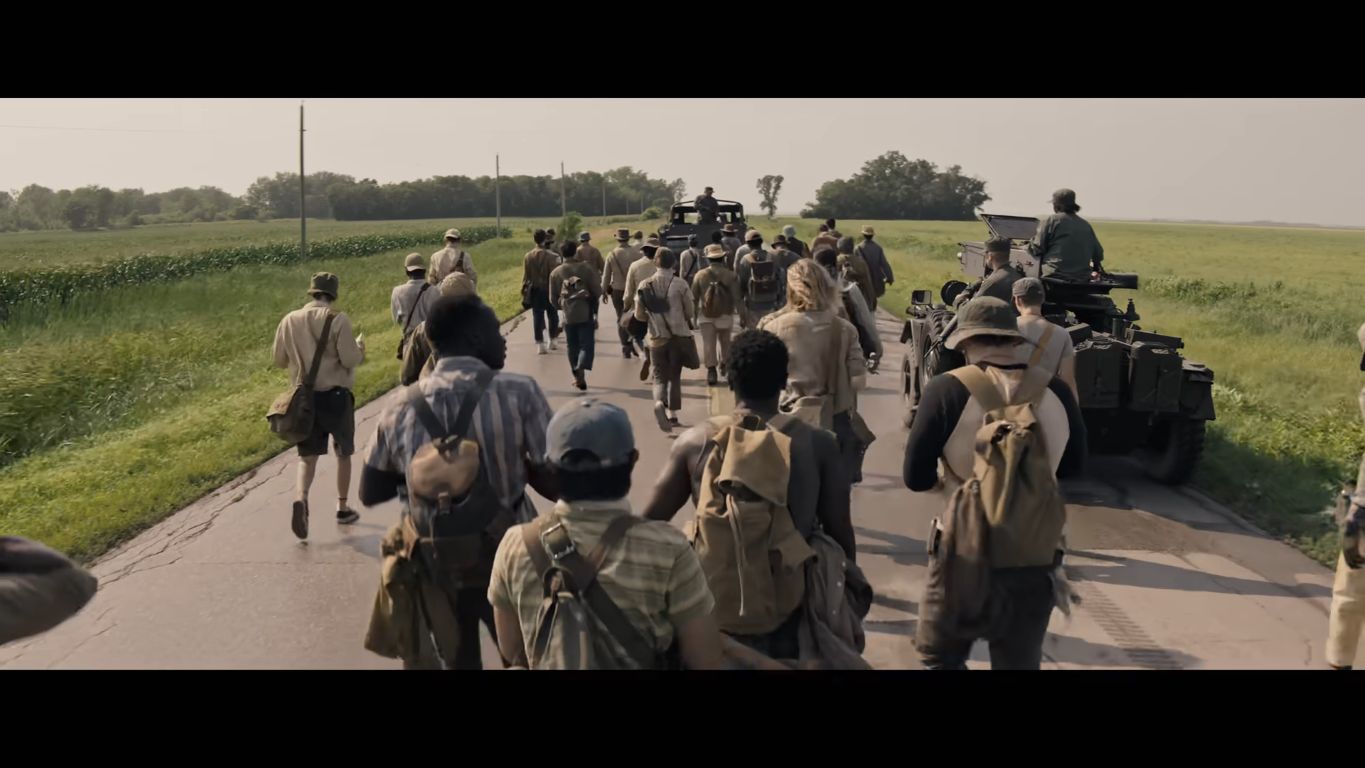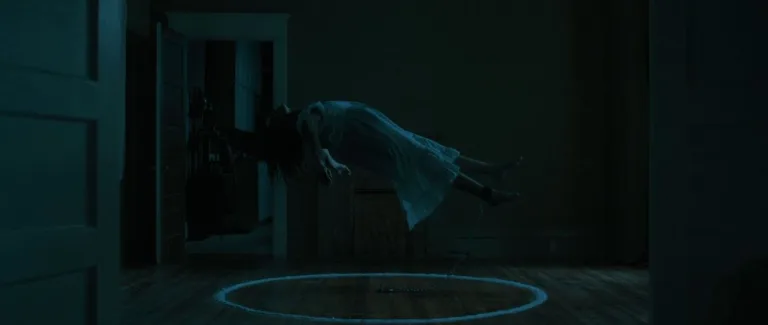The Long Walk (2025) Ending Explained – Breaking Down The Shocking Final Twist
Welcome to Knockout Horror. Did you just get done watching the Stephen King adaptation The Long Walk and wonder what the hell was going on? Did that ending confuse you? Do you need an explanation for why the hike took place in the first place? Well, good news. We are here to help with this The Long Walk Ending Explained article.
This Was a Great Movie!
I really enjoyed this movie a lot. In fact, it is going to be opening up our 31 Days of Halloween 2025 Horror Movie a Day feature. The review will be dropping on October 1st. I have to be honest, though. It did leave me with a lot of questions and my fiancée and I spent a good amount of time talking about it. That got me to thinking. If I had questions, I’ll be other people had questions to so why not help clear things up.
I’m not going to be referring to the book in this article. I want to keep the explanation for the movie of The Long Walk self contained. You may have prior knowledge of how certain things make more sense because you read the book but please don’t contact me to shout about how I am wrong. I have never read the book, I have only watched the film. I am explaining the ending to the film. Naturally, feel free to contact if you have some helpful information, though.
I am doing things a little different today. I want to answer a few questions about the movie’s setup and then recap the plot before explaining the ending. Don’t forget, as well, that this is only my interpretation of the ending. Yours might be completely different so keep that in mind. Without further ado, let’s take a look. Oh, and there will be spoilers so back out right now if you haven’t watched the movie yet.
When Is The Long Walk Set?
So this is probably the first part of The Long Walk that’s a bit confusing, right? When is the movie set? Well, it’s a somewhat difficult question to answer as the movie does little in the way of worldbuilding. With that in mind, we have to do some creative deducing. The novel was written in 1979. We don’t see any cell phones or modern technology. Cars look to be from the 60s and, potentially, the 70s. The fashion choices also hint at the movie being set during this time period.
The answer actually lies in what the soldiers are wearing and the weapons they carry. The soldiers are wielding, along with M1 Carbines, M16 Assault Rifles. Most weapon enthusiasts are incredibly good at spotting different gun types and will probably be able to tell that these are early model M16s. I’m not a weapon enthusiast, I have just played a lot of video games set during the Vietnam war where the M16 became a standard issue assault rifle.
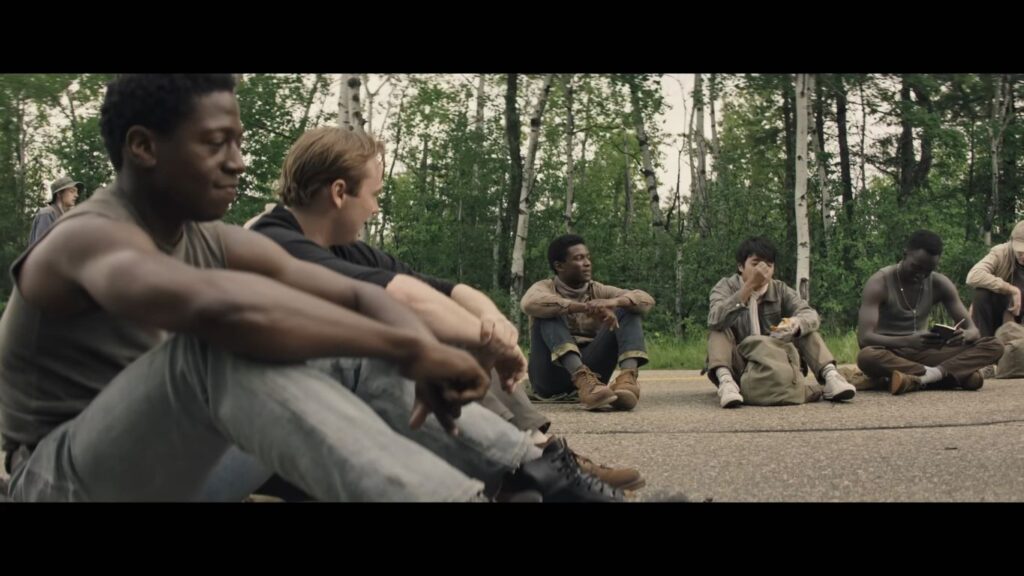
This really narrows things down a bit as the M16 wasn’t put into service until 1964. It became standard issue in 1969. The soldiers also appear to be wearing the standard issue OG-107 uniform that was common during the Vietnam war. The USA entered the Vietnam war in 1965 before withdrawing in 1973.
We can reasonably deduce from all this evidence that The Long Walk is probably set in the early to mid 1970s. It’s important to remember, however, that this isn’t the reality that we know. This is an alternate, totalitarian, version of America under a completely new regime. This brings us onto our next point.
Who is The Major?
We know for a fact that the version of American depicted in The Long Walk is not the version we are all familiar with. It is under military rule in the form of a military dictatorship. A military dictatorship is exactly what it sounds like. There are no elected leaders or officials. The country is ruled by the armed forces and the leader of said armed forces is, essentially, the head of the country.
In this case, that appears to be Mark Hamill’s enigmatic character The Major. The Major is something of a “cult of personality” type of character. Completely ruthless, all powerful, and omnipresent in the people of America’s lives. Think of him like a dictator that you would see on television all the time, would see pictures of throughout cities, and people would be expected to worship.
Stepping out of line and disrespecting The Major or expressing outsider thoughts would result in certain death. Understanding The Major from this point of view helps to grasp why he would hold so much authority. After all, there are many examples of this throughout history and even still present today in places like North Korea. With this in mind, he’s almost a composite of a number of different real life figures.
He is part Francisco Franco for his deceptively friendly and almost paternal style of “looking out for the nation”; he’s part Augusto Pinoche for his approach to creating economic stability regardless of the cost; and he even shares traits with German World War 2 leaders thanks to his use of the youth as a motivating factor for the entire country.
Why Is America Under a Military Dictatorship in The Long Walk?
We never really learn why America is under this military dictatorship. I imagine that is a somewhat deliberate choice. If we are to take away the fact that this military dictatorship appears to be somewhat monolithic and has, perhaps, been in power for a long time. Meaning the teens in the movie were born into it and really don’t know any different. The movie places you in their shoes by just dropping you into the world as it is.
You are almost expected to just accept it in the same way the people that live there have to. It’s a cruel world that makes little sense. It’s tough not to see the story here as something of an allegory for the real life social issues of the time period. Young men being drafted to a war in a far away country, political upheaval, the idea that you should conform to whatever your government deems to be right.
In a lot of ways, The Long Walk is another loss of innocence story, a concept that often plays a huge part in King’s novels. It is more than just the boys that are losing their innocence by seeing their friends shot dead, though. The entire nation is by engaging in the spectacle and celebrating the winner. As a poor and suffering society loses hope, they also begin to lose some of their humanity for a chance to escape from their own troubling realities.
What Is The Long Walk?
The Long Walk is a relentless march that takes place between 50 boys who are chosen at random from a group of volunteers. One boy is chosen from each state of America. Walkers must maintain a consistent pace of 3MPH. Should they slow down, they will be given a warning, if they don’t speed up, they will be give a second warning. A third warning will result in them being executed by merciless soldiers known as “Squads”. Walkers also have other rules such as not being able to step off the path or they will be immediately shot.
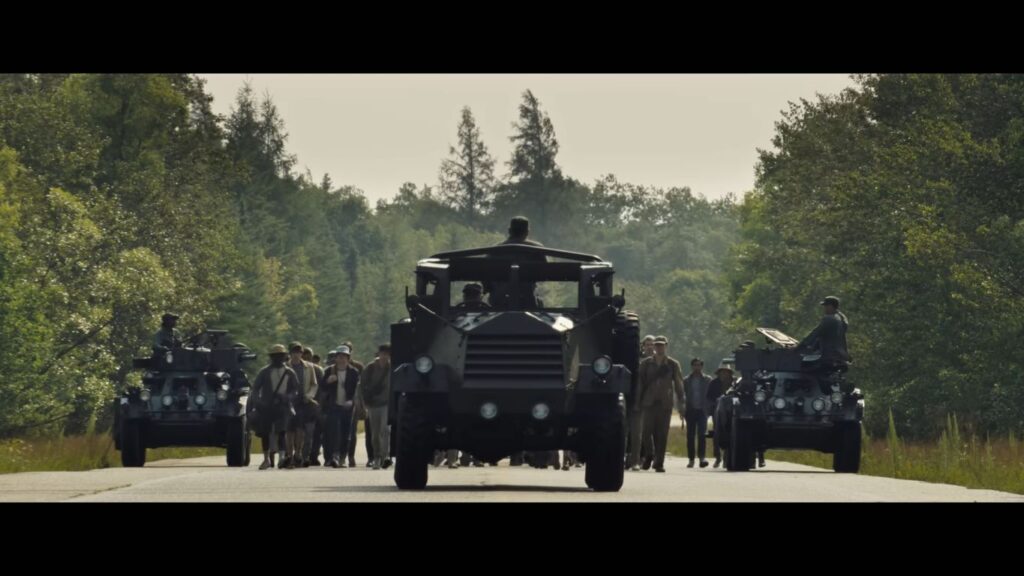
The walk will continue, day and night with no rest or no opportunity to stop, until one boy remains. That boy will be rewarded with massive riches and a wish. But what is the purpose of the walk? We know for a fact that the military dictatorship that the country is under has left people poor and destitute. Not only have they had to give up their freedom of expression, freedom of speech, and ability to engage in alternate teachings. They are also monetarily poor and living an extremely difficult existence.
Why Does The Long Walk Take Place?
The Long Walk is, at least ostensibly, portrayed to people as an opportunity to motivate the populace to kick start the stifled economy. These young boys march relentlessly, with all but one finding themselves killed for failing to keep pace. The one that wins will serve as an inspiration to the entire country. If they could survive through the harshest type of physical torment possible, with the majority being willing to die, then people can survive while working ridiculously hard to support the dictatorship.
In reality, the walk is a form of propaganda and a way for the regime to reinforce their brutal doctrine based around conformity, endurance, and personal sacrifice. It’s a grand spectacle designed purposefully to remind the populace of what is expected of them and what will happen should they fail. It also serves as a way to pacify the population and reinforce the idea that service to the regime is a worthwhile, and even glorious, undertaking.
Is The Walk Really Voluntary?
The walk is described as voluntary but this isn’t true at all. While the boys have the illusion of choice, they all volunteer to compete regardless. The walk is presented as a representation of true patriotism. The boys who win are idolised and propped up as heroes. This is contrasted against their actual reality. The dictatorship has turned the country into a hopeless and poverty laden society with no upward mobility. The possibility of escaping this reality is virtually none.
The walk offers them the only chance to change their lives. If they win, they are given immense riches and granted their every wish. To many, this is a much better alternative than staying in the bleak world that they currently live in. There is immense societal and personal pressure to compete in the walk and though it is deemed to be voluntary, nobody would ever dream of not volunteering.
Parallels to Real Life
Aside from the fact that they would be deemed to be weak, unpatriotic, and selfish. They would miss their one chance to change their lives for the better. To them, the risk seems worth it. It must be better than living the life they are currently living. In a lot of ways, their existence is designed purely to funnel them towards the walk. It’s their only change of a better life.
You can draw parallels here to the anxieties of the post-Vietnam era in which the novel was written. There was a pervasive feeling that the government viewed its young men as expendable resources for its own ideological purposes. The Long Walk taps into this fear, creating a world where societal pressure and propaganda successfully convince young men to sacrifice themselves for a spectacle, all under the guise of patriotic duty. It explores the same dark questions about a system that glorifies the sacrifice of its youth while offering them little else in return.
Recapping The Plot of The Long Walk
The story of The Long Walk follows Raymond “Ray” Garraty, a teenager from Maine (it’s always Maine with King), whose mother pleads with him not to take part. We don’t immediately know why Ray is joining the walk but we will learn all about that a bit later on. Ray ignores his mother’s protests and lines up with the others at the Canadian border.
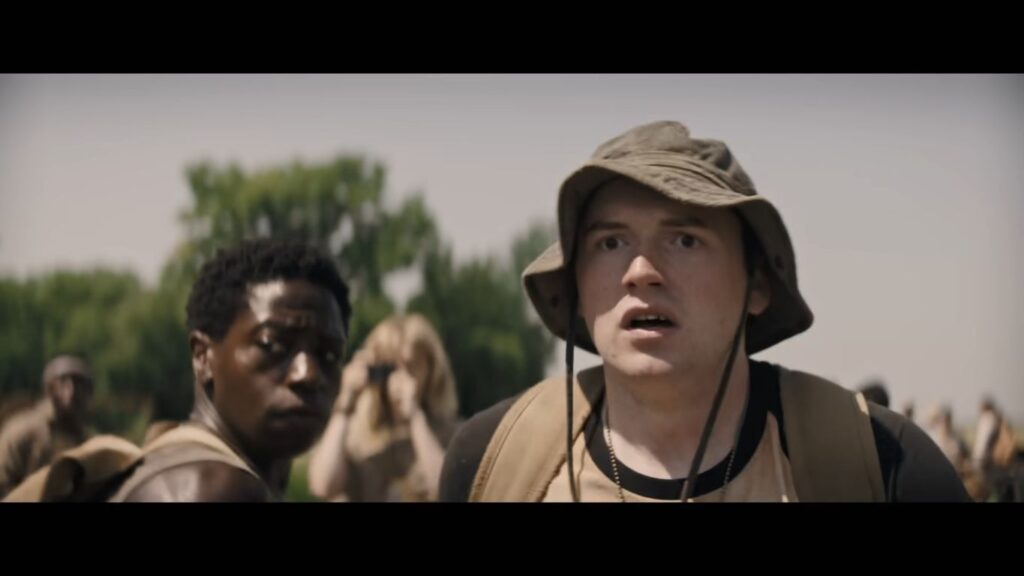
While waiting for the event to begin, he begins to bond with a handful of fellow contestants. We have the thoughtful Peter “Pete” McVries, the cynical and rather antagonistic Gary Barkovitch, the friendly and kind-hearted Art Baker, the rather nerdy Hank Olson, the determined Native American Collie Parker, and the aloof Stebbins, among others. Watching over them all is the Major, the cult-of-personality figure who rules over the country with an iron fist.
The Walk gets off to a fairly unremarkable start. This changes pretty quickly, however. The first death comes within hours when Adam “Curley” White collapses with a severe leg cramp. He’s given three warnings before being executed in front of the other boys. We learn, pretty quickly, that this whole event is a national spectacle. There are even fangirls lined up on the side of the road for the competitors.
The March Goes On
Another death occurs when one of the competitors suffers an epileptic seizure and is shot. Soon after, Barkovitch deliberately goads another walker, Rank, into attacking him, leading to Rank falling over, eating shit, and, subsequently, being executed by the Squads. This cements Barkovitch’s reputation as, quite frankly, a bit of a prick hole. This also sees Barkovitch shunned by the rest of the walkers and accused of being a murderer. Something which surprisingly upsets him quite a lot.
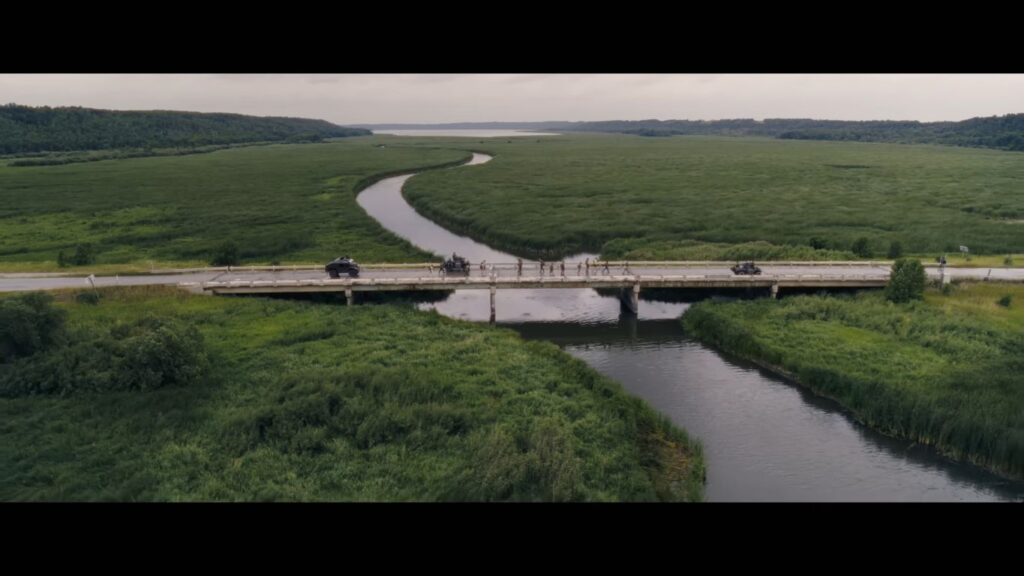
As night time draws in, tiredness begins to become a big factor. Ray is absolutely shattered and nearly falls behind incurring multiple warnings. Luckily, Pete encourages him to keep moving, pushing him on and helping him traverse a steep incline. They make it through the night by exchanging shoulders to take walking naps. Something that sounds both absolutely awful and weirdly comforting.
As miles stretch into days, the boys share food, trade stories, and debate what they’d do with the fabled “prize.” Pete, who’s just a damn nice guy, dreams of improving the world if he wins. Olsen wants ten naked ladies. A very specific number but you can’t hate someone for having a dream. Later, Ray will confide his real reason for entering the walk to Pete. It’s all about revenge.
Why Was Ray’s Father Murdered By The Regime?
Ray relates how his father was the the kindest and smartest person he knew. In fact, he believed he was the only genuinely good person left in the world… Sorry Pete! He was an uninhibited individual with a love for the arts and an interest in outsider teachings.
He had instilled in Ray a spirit of defiance and independence, sharing with him the works of Henry David Thoreau, whose ideas about civil disobedience shaped Ray’s own mistrust of authority. Unfortunately, it was Ray’s father’s mistrust of government and defiance of authority that got him killed.
He was arrested for political descent for sharing his point of view with other people. This is very reminiscent of what has actually happened, and still continues to happen, in totalitarian regimes and dictatorships. People in North Korea have been sentenced to decades of hard labour or even executed for listening to South Korean pop music, for example.
Rather than bow to the Major which would have saved his life, he chose defiance. This resulted in him being executed. It also pushed Ray to develop a sense of defiance of his own and that factors into his plan should he win the walk.
What is Ray’s Plan?
Ray, should he win and be the last man standing in the walk, plans to execute the major. He is going to use his one wish to ask for a M1 Carbine rifle. He will then use this rifle to shoot the major. Pete tries to talk him out of this by reasoning to his morality.
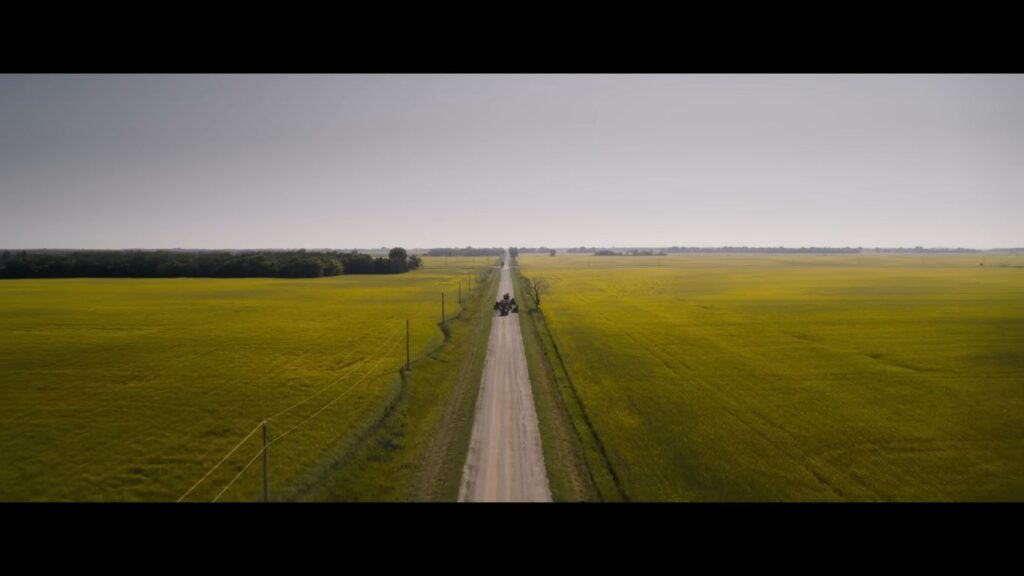
He tells Ray that he doesn’t believe he could accept victory if it meant someone else had to die for it. The whole Walk is already built on sacrifice, and Pete insists he won’t add another deliberate death to the tally. He admits that when his time comes, he’ll simply sit down and accept his fate rather than continue killing by proxy.
Fatigue, hunger, and injuries slowly take their toll on the remaining competitors. Harkness breaks his ankle in an absolutely vile scene but continues walking until he collapses and is shot. Another dude attempts to approach the tank but is clubbed with the rifle before his legs are crushed. Pretty gruesome! The dude who had the radio strips off and runs ahead, leaving the road before being executed without warning, as per the rules.
Hank’s Death And The March Continues
Hank Olson, who has been eating less than others due to allergies, unfortunately goes delirious. He turns around and heads towards one of the cars where he lunges at the soldiers before being shot in the stomach. Apparently the squads want him to bleed out slowly as an example to the other competitors to not follow his lead. Art Baker runs back to Olsen to retrieve him but is dragged away by Ray and Pete before he too is shot.
We later learn that Olsen actually had a wife, despite his wish for 10 naked women. He was the only one out of the entire group who was married. Ray and the others pledge to help support Olson’s widow should they win.
Surprisingly, the once ultra-combative Barkovitch desperately wants to join in with the pact and become one of the Musketeers. Ray relents and agrees before trying to convince Pete but Barkovitch quickly spirals into a breakdown and kills himself by stabbing his own throat with a spoon.
Five Remain
This leaves only Ray, Pete, Stebbins, Art, and Collie left. The Walk suddenly becomes a test not just of endurance but of sanity as fatigue sets in and lack of sleep punishes the boy’s minds. When they march through Ray’s hometown of Freeport, Ray’s mother is waiting for him. She notices his bleeding feet and is visibly upset.
Ray briefly runs toward his mother to apologise for even entering the walk in the first place, nearly costing him his life. Luckily, Pete pulls him back to safety. The strain grows unbearable for the remaining competitors.
Collie Parker snaps, grabs a soldier’s rifle, kills a guard, and is shot in retaliation. Rather than bleed out to death, he sings a Native American chant before shooting himself. Later, Art Baker collapses from an internal haemorrhage, After being helped up, he thanks Pete and Ray for their friendship before stopping and awaiting his fate.
The Last Competitors March On
Eventually, only Ray, Pete, and Stebbins remain. On the edge of collapse, Stebbins confesses a secret: he is actually one of the Major’s numerous illegitimate sons. His wish would have been for his father to finally recognise him and accept him. The only problem is that Stebbins has been ill throughout the entire walk, despite never falling ill once in the past ten years. Accepting that he will never be able to win, he willingly stops walking and is killed, leaving just Ray and Pete.
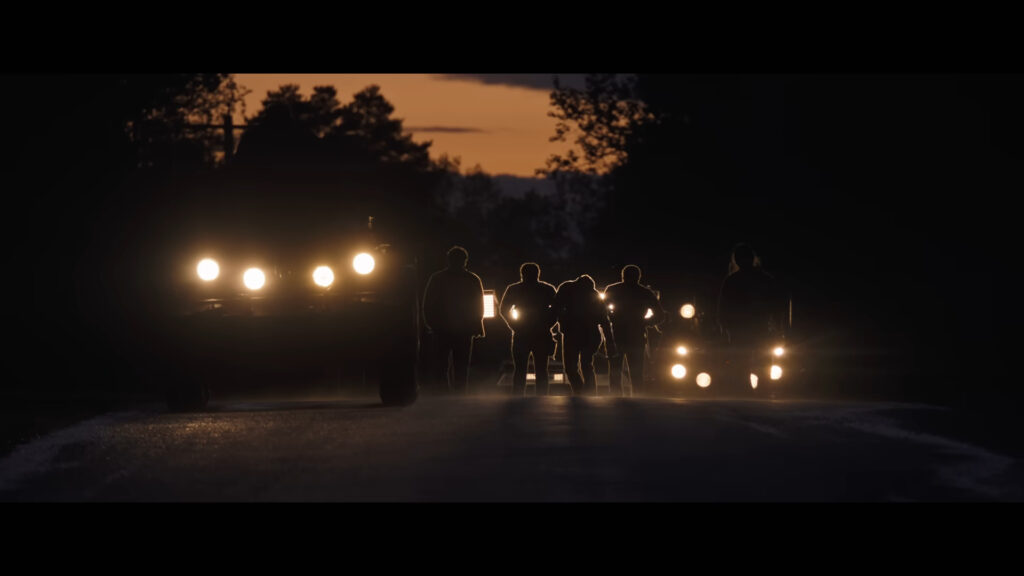
After nearly five days and over 300 miles, the two boys stagger into a town where crowds await the climax. Pete, exhausted, prepares to stop. This, obviously, is a reflection of his earlier statement that he would sooner give up than see someone die on his behalf. Ray urges him onward, picking him up and pushing him forward. In a final act of sacrifice, Ray, who already has two warnings, halts instead, deliberately giving up his life so Pete can win. The Major executes him personally and crowns Pete the victor.
Pete Fulfils Ray’s Wish
The crowds are jubilant but Pete is absolutely devastated. When asked for his wish, Pete shocks everyone by requesting a rifle. He wants to carry out the very plan Ray had shared with him.
He holds the gun up and aims it at the Major. The soldiers raise their weapons but the Major tells them to stand off, thoroughly believing that Pete, like the other boys, would be brainwashed enough to never shoot him.
Pete briefly hesitates when the Major tells him he will soon have everything he could ever wish for. He then puts the gun back up and shoots and kills the Major in front of the silent crowd. Instead of celebrating or collapsing, Pete turns away from the spectacle, shoulders the weapon, and continues walking down the endless road ahead.
Explaining The Ending
There’s an interesting role reversal that takes place during the events of The Long Walk. Although Ray sets out with his eyes firmly fixed on avenging his father. His viewpoint changes and a lot of that is due to Pete himself. Pete’s kind nature and logical argument regarding people being generally good and wanting to make a change in the world obviously struck a chord with Ray.
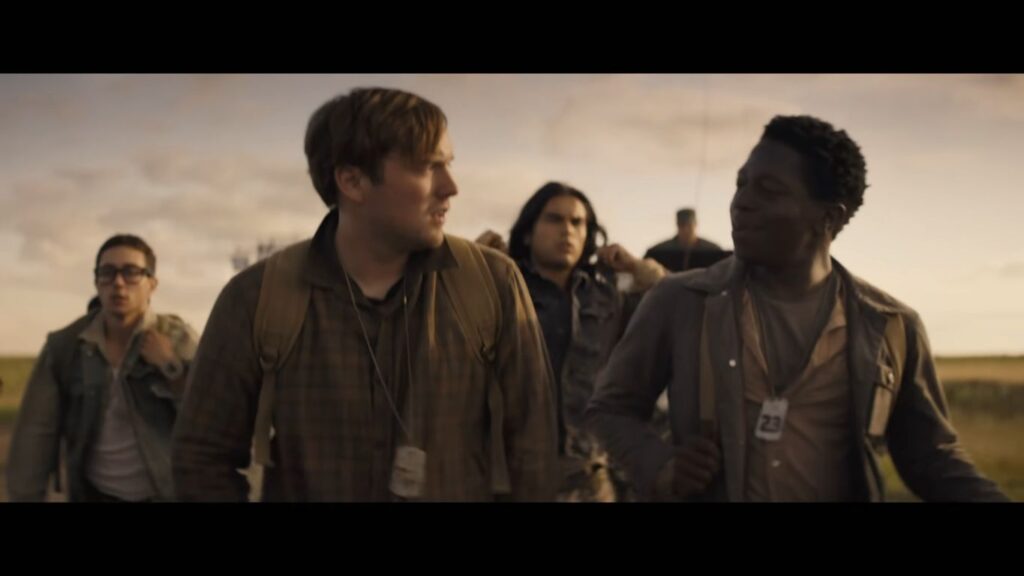
Ray eventually realised that his act of revenge would be less beneficial to the world than Pete winning the competition and being able to make a change using his wish. Ray, had he won, wouldn’t be able to use his wish in a meaningful way that would benefit people. It would purely be used for selfish revenge. In a moment of self sacrifice, he decides to give his own life so that Pete can make the world a better place.
The only problem is that Ray has imparted a change on Pete, as well. Pete has had a difficult life. His parents were abusive, his uncle was also violent, he was never wanted, and he suffered tremendously. Despite this, although he felt jaded about things like family, he never gave up his humanity. He easily recognised suffering in other people and wanted to help ease it.
Two Different Upbringings
Pete and Ray’s very different upbringings and attitudes towards life helped them to both expand and broaden their viewpoints. Ray’s friendship with someone so caring and empathetic changed his perspective on the world. The same happened for Pete. He has never really felt like he belonged but finally developed a close friendship with the Musketeers. A friendship he would sacrifice his life for. When it was taken away from him, he recognised the pain Ray felt when he lost his dad.
While Ray was trying to help Pete and give him the opportunity to save the world, believing him to be a much more deserving winner. He didn’t consider that Pete never wanted anyone to die or sacrifice themselves for him and that he loved Ray. When Ray did this, it shook him to his core. Pete had never had chance to experience this before because he never really cared for anyone. When it happened, it hurt him immensely. He immediately wanted to take revenge on the Major who had just shot his friend.
Not only would he be completing Ray’s plan, but he would be avenging his friend, as well. Perhaps with the Major gone, the world would change too. That’s key here, as well, in my opinion. I really think it’s important to note that he kills the major not just to complete Ray’s plan but also because he is feeling the exact same thing that Ray felt when his father was killed. The unfair loss of a loved one. Pete wants his own revenge, too.
Did It Really Happen
I’ve seen some people wondering whether the ending actually happened or Pete just imagined it. I think it is very clear that it did, in fact, happen. I think the lack of a crowd and the strange, soft focus, almost dream-like style of filming is done purely to reflect the haze of trauma that Pete is feeling. His viewpoint became narrow when Ray was killed and the noise was drowned out because he was suddenly consumed by grief. All of a sudden, revenge was the only thing on his mind.
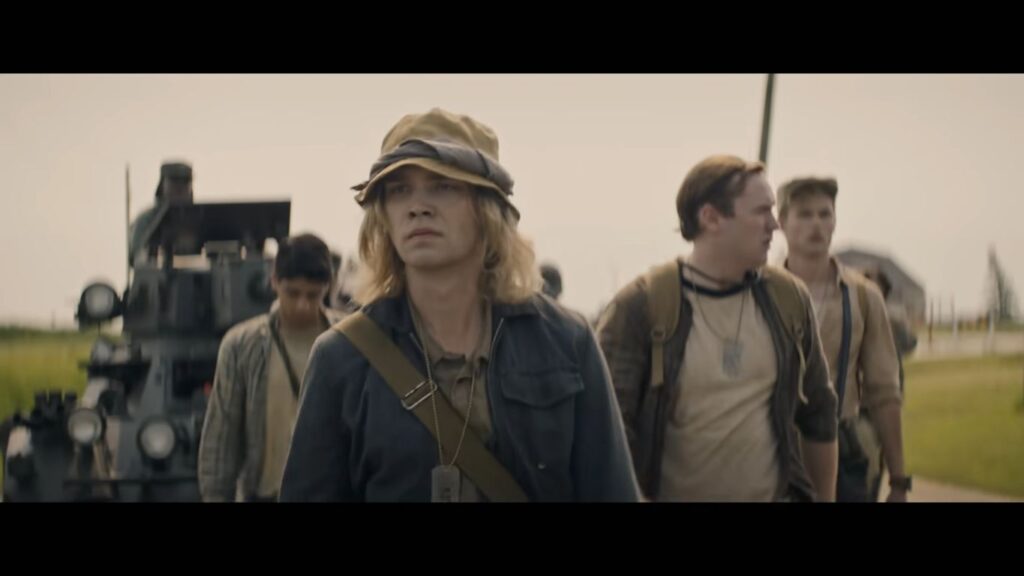
But why didn’t the Squad shoot Pete when he held the gun up to the Major? It’s really quite simple. The Major told them to stand down. He didn’t believe for one second that Pete would shoot him. He thought that he would come to his senses when he reminded him of the prize that was now his. This was an important moment for the Major to look both powerful and in control. Had they shot him, he would have looked weak. The Major just happened to grossly misjudge the situation.
Does Pete Survive?
The final question is, did Pete survive? Well, this is, obviously, left rather ambiguous, as is the nature of a lot of Stephen King stuff, even though the ending here is very different from the novel. Pete is seen to just walk off into the long road after shooting the Major. My opinion is that I think we can conclusively say that Pete was shot shortly after turning away from the crowd or immediately after killing the Major.
It just doesn’t make sense any other way. The soldiers would retaliate once they saw that he actually went through it. The final scene reflects the fading perception of the world by a dying man. No soldiers, no crowd, no noise, no fireworks, just the rain and an empty road that Pete will continue walking on. Maybe he will meet up with Ray on the other side? That’s the way I see it. Sometimes you just have to go with logic.
The alternative would be that he is allowed to carry on walking, hopefully finding a better life for himself. That’s kind of dull though, right? Either way, the ending does a nice job of illustrating the cyclical nature of the Walk itself. It will continue on and on relentlessly, regardless of what happens. Thanks for reading and spending your time at Knockout Horror.
Disclaimer: Images, posters, and video stills used in this horror ending explained article are the property of their respective copyright holders. They are included here for the purposes of commentary, criticism, and review under fair use. Knockout Horror makes no claim of ownership and encourages readers to support the official release of all films discussed.
Do You Want Me To Explain a Horror Ending?
Know a horror movie with a confusing ending? Suggest it below and I might explain it. The more suggestions for the same film, the more likely I am to explain it.

